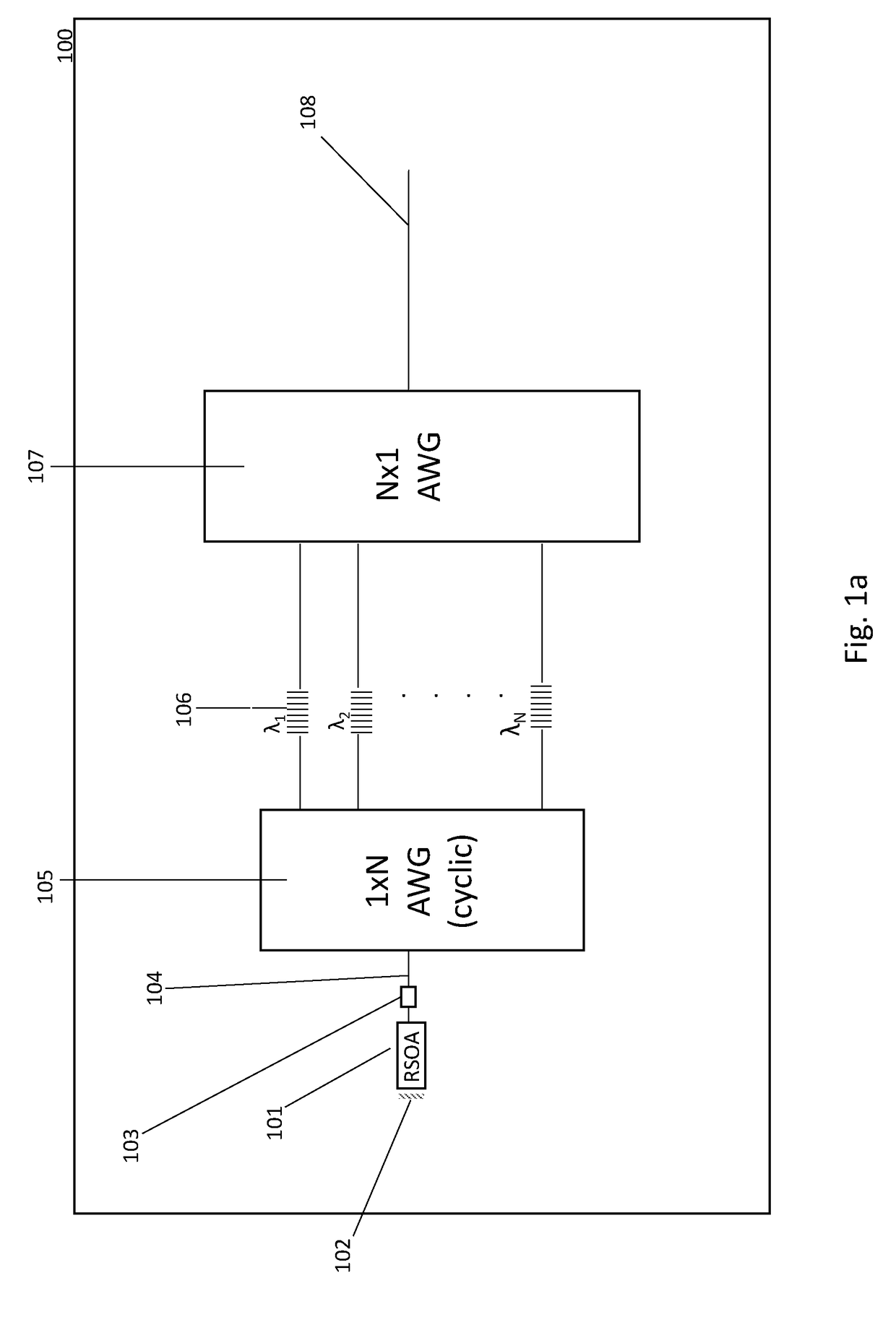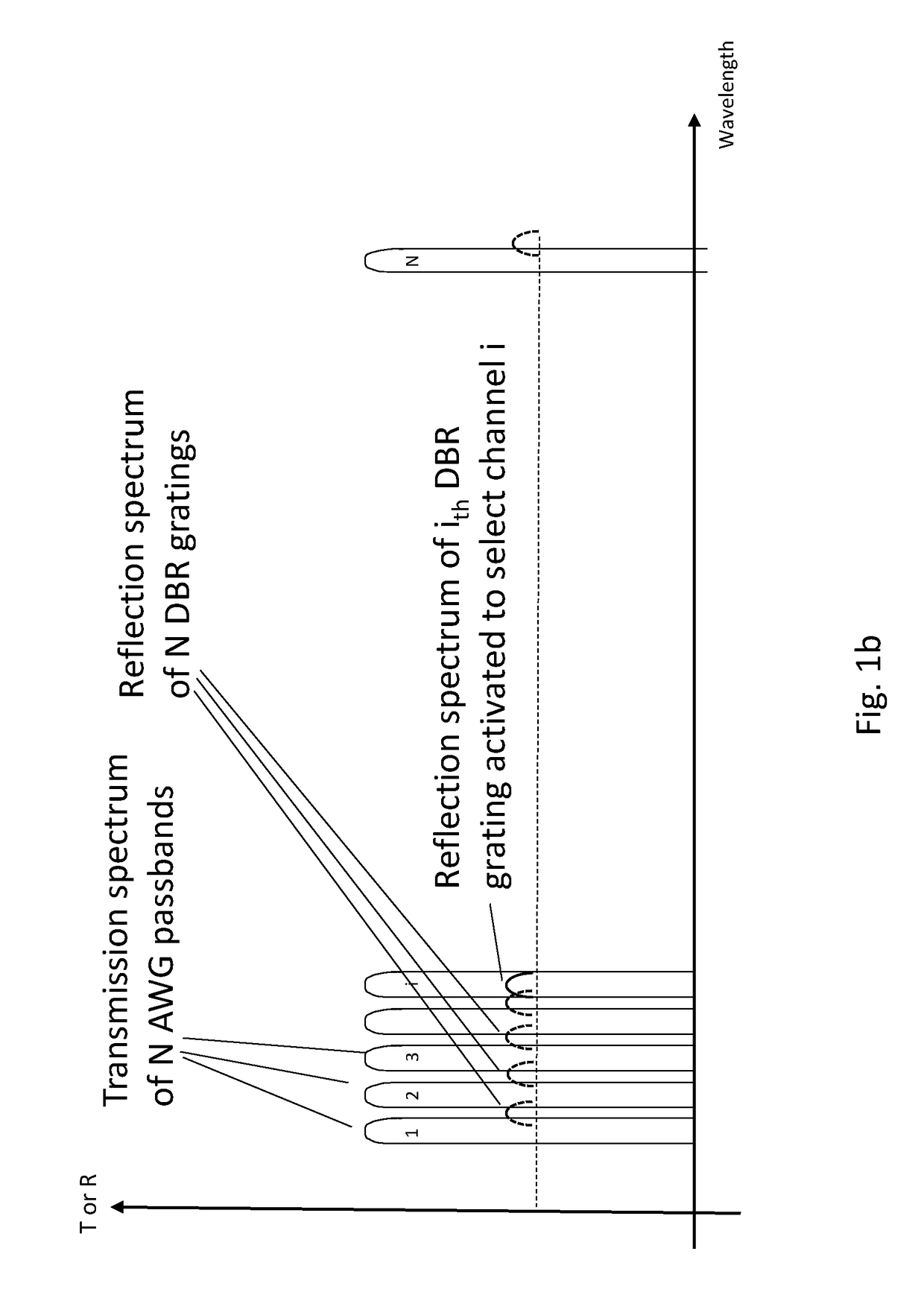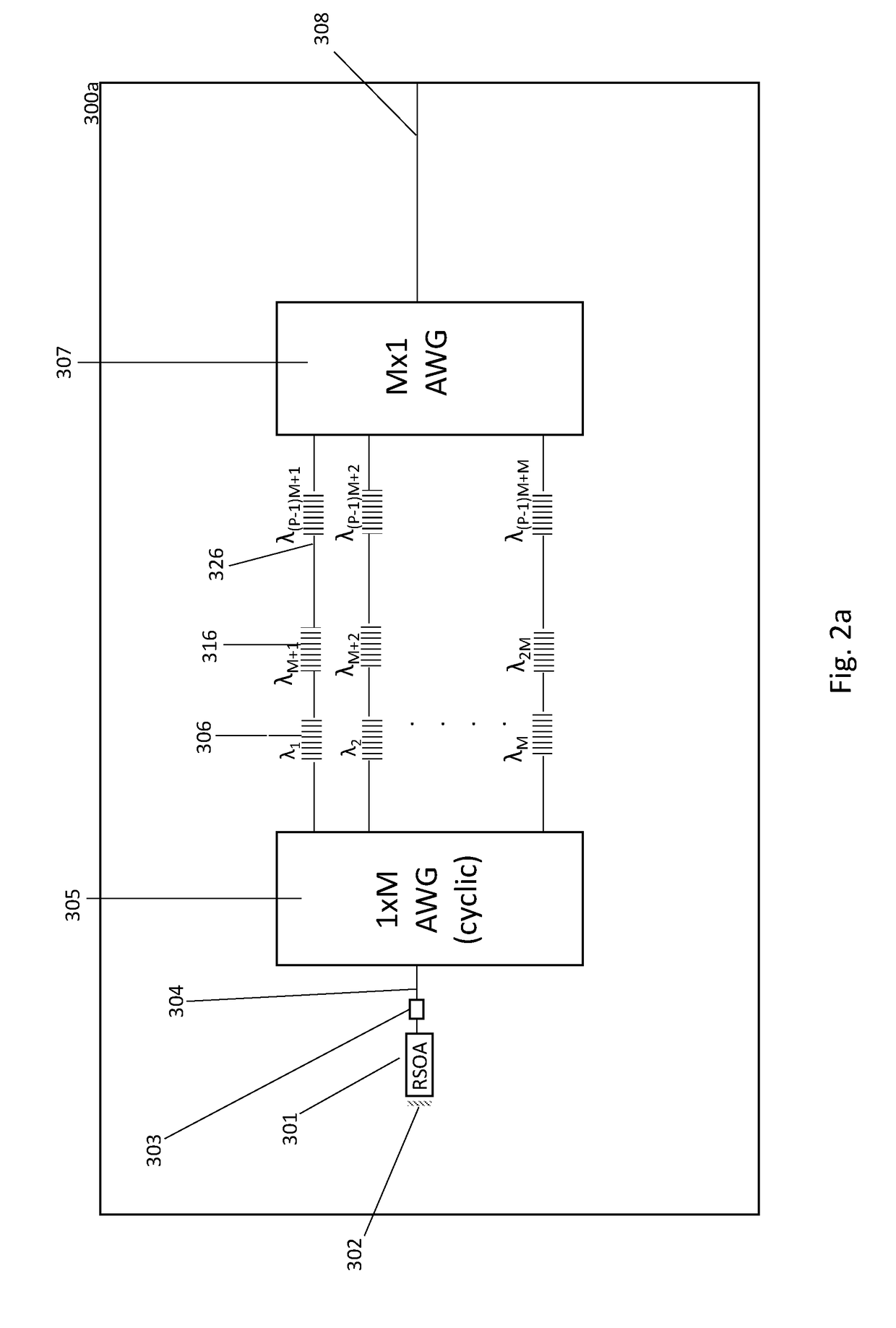Discrete wavelength tunable laser
a tunable laser and discrete wavelength technology, applied in the field of discrete wavelength tunable lasers, can solve the problems of unable to make tunable lasers made entirely on semiconductor chips without gratings requiring dacs for control, high cost and power consumption, etc., and achieve the effects of reducing increasing the reflectivity of dbrs, and large spectral rang
- Summary
- Abstract
- Description
- Claims
- Application Information
AI Technical Summary
Benefits of technology
Problems solved by technology
Method used
Image
Examples
Embodiment Construction
[0041]A first embodiment of a discrete wavelength tunable laser 100 is described with reference to FIGS. 1a and 1b. The discrete wavelength tunable laser 100 includes a semiconductor optical amplifier (SOA) reflective semiconductor optical amplifier (RSOA) 101 which generates light over a given gain bandwidth. The back surface of the RSOA 102 includes a high reflectivity mirror at 102 forming back end mirror of the optical cavity of the tunable laser.
[0042]The tunable laser includes an Arrayed Waveguide Grating (AWG) 105 in the form of a 1×N AWG which has a single input optically coupled to the output of the RSOA via a waveguide 104. A phase tuner 103 is located at the waveguide 104 for fine tuning of the wavelength.
[0043]The AWG has N outputs, each of which transmits or passes a respective fixed spectral passband, each of which lies within the gain bandwidth of the RSOA.
[0044]A plurality N of waveguides are each optically coupled to a respective one of the N outputs of the 1×N AWG....
PUM
 Login to View More
Login to View More Abstract
Description
Claims
Application Information
 Login to View More
Login to View More - R&D
- Intellectual Property
- Life Sciences
- Materials
- Tech Scout
- Unparalleled Data Quality
- Higher Quality Content
- 60% Fewer Hallucinations
Browse by: Latest US Patents, China's latest patents, Technical Efficacy Thesaurus, Application Domain, Technology Topic, Popular Technical Reports.
© 2025 PatSnap. All rights reserved.Legal|Privacy policy|Modern Slavery Act Transparency Statement|Sitemap|About US| Contact US: help@patsnap.com



